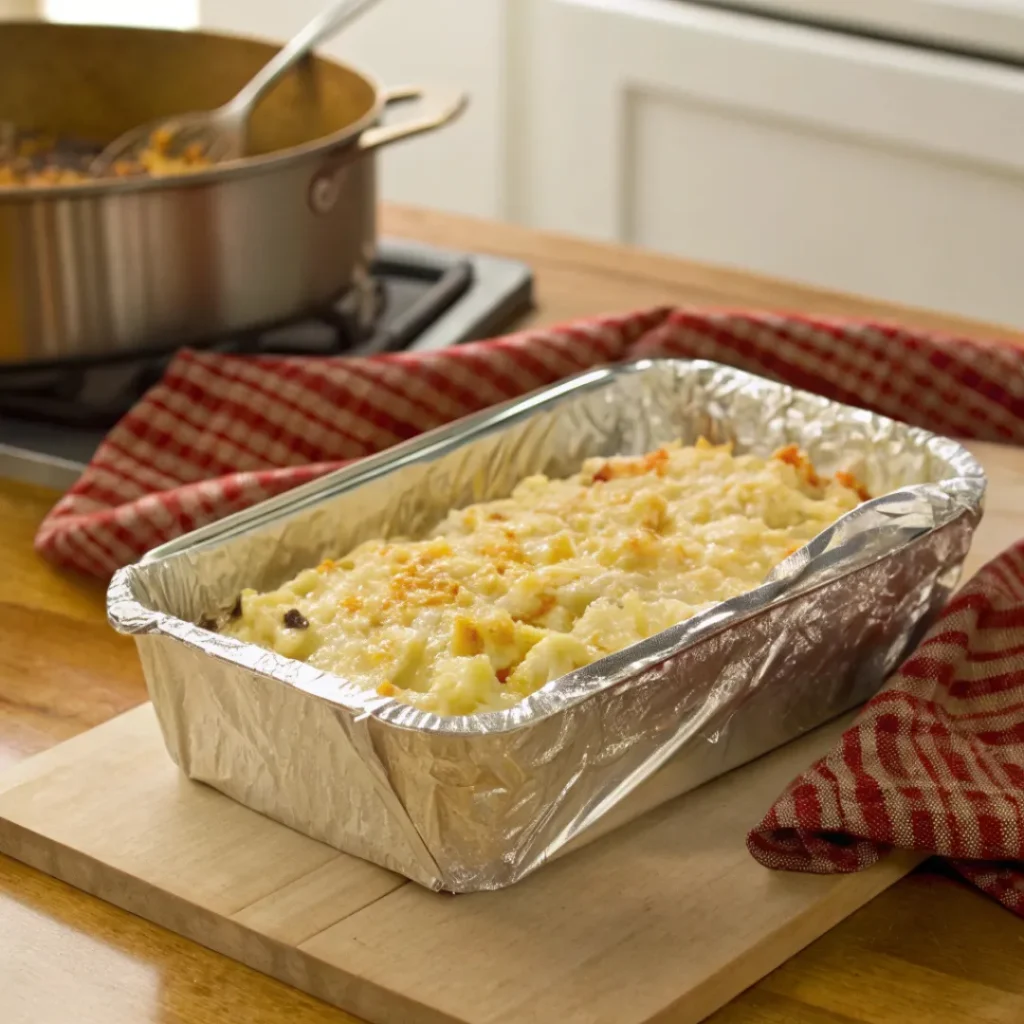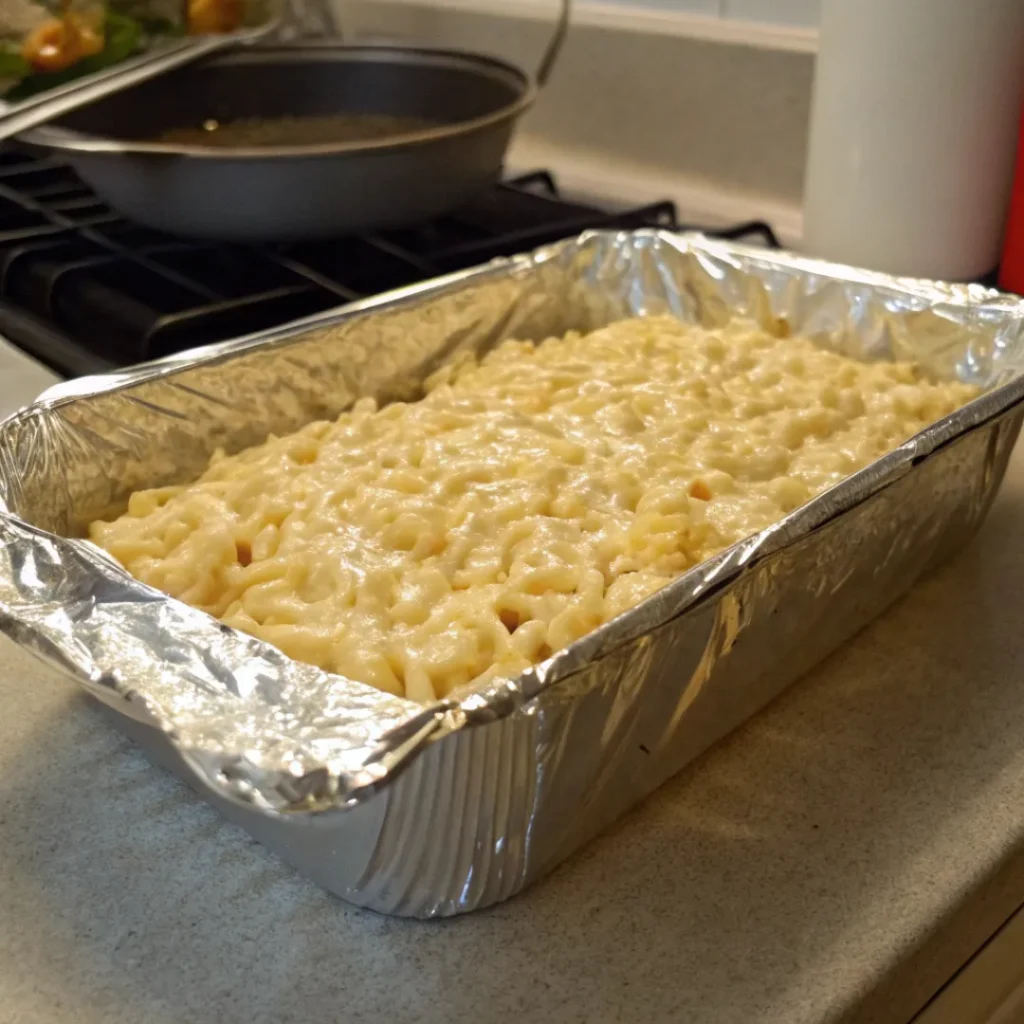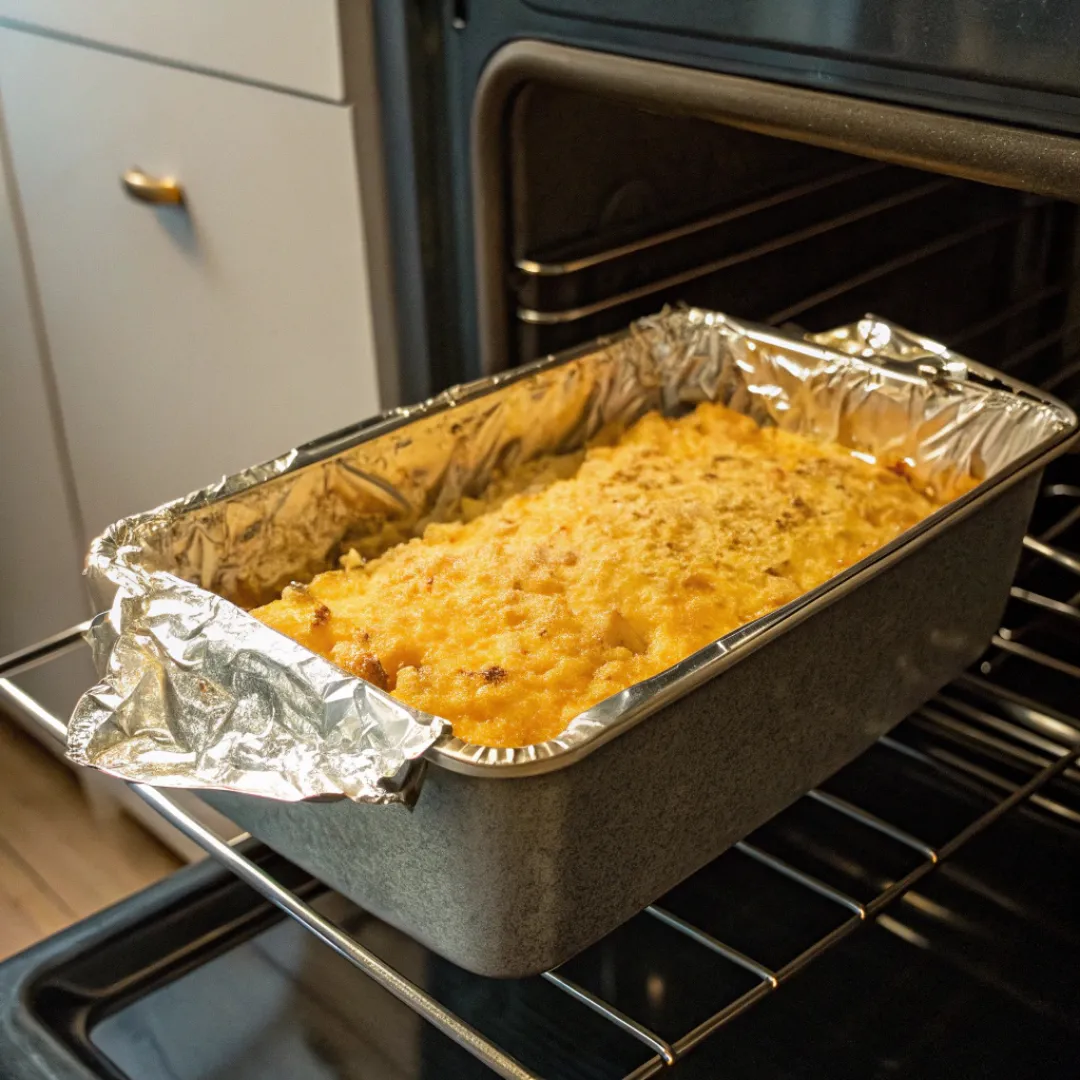Macaroni and cheese is a beloved comfort food, known for its creamy, cheesy interior and, in many cases, a golden, crispy topping. When baking macaroni and cheese, one of the most common questions is: Should you cover macaroni and cheese when baking in the oven? The answer largely depends on the texture and taste you’re hoping to achieve. Covering or leaving it uncovered can have a noticeable effect on the final dish, from the creaminess of the sauce to the crispness of the top layer.
In this article, we’ll dive into the pros and cons of covering macaroni and cheese during baking, how to decide which method to use, tips for achieving the best results, and variations to customize your mac and cheese. Whether you’re new to making homemade mac and cheese or just looking to perfect your recipe, this guide will help you make the right decision for your next bake.
Should You Cover Macaroni and Cheese? Factors to Consider
Deciding whether to cover macaroni and cheese depends on several factors, including the texture you prefer, the ingredients you’re using, and the desired moisture level in the dish. Covering mac and cheese traps moisture, which can keep the interior extra creamy, but it may prevent the top from browning. Leaving it uncovered, however, allows for a crispy, golden top layer, enhancing the overall texture and flavor. Consider the following:
Moisture Preference
If you like a super creamy, slightly wetter texture, covering may be the way to go.
Topping Texture
If a crunchy topping is essential, it’s best to bake it uncovered or cover it only partially through the baking process.
The Benefits of Baking Mac and Cheese Uncovered
Baking macaroni and cheese uncovered is a popular method that offers several advantages:
Golden, Crispy Top
Leaving the dish uncovered allows the top to brown, creating a delicious, golden crust. This texture is especially satisfying when paired with the creamy interior.
Reduced Moisture
An uncovered bake allows moisture to escape, which prevents the dish from becoming too watery and keeps the sauce thick and rich.
Enhanced Flavor
The top layer of cheese can caramelize slightly, enhancing the flavor and adding depth to the dish.
For those who love a contrast between a crispy top and a creamy base, baking uncovered is often the preferred choice.
When to Cover Macaroni and Cheese
Covering macaroni and cheese can be beneficial under certain circumstances:

Preventing Over-Browning
If your mac and cheese is browning too quickly, covering it with foil for part of the baking time can prevent it from becoming overly dark or burnt.
Maintaining Extra Creaminess
For those who prefer a soft, creamy texture without a crunchy top, covering the dish ensures that moisture is retained, keeping the sauce smooth.
Reheating
If you’re reheating a batch of macaroni and cheese in the oven, covering it with foil can help prevent it from drying out.
If you choose to cover the dish, consider removing the cover during the last 10-15 minutes of baking to allow some browning on top.
How to Achieve a Creamy Interior and Crispy Topping
To get the best of both worlds—a creamy, cheesy interior and a crispy, golden topping—try this method:
Cover and Bake Initially
Cover the macaroni and cheese with foil for the first 20-25 minutes of baking.
Remove the Cover
After the initial baking period, remove the foil and bake uncovered for the remaining 15-20 minutes. This will allow the top to become golden and crispy.
Add Topping in Stages
For extra crunch, consider adding breadcrumbs or more cheese during the last 10-15 minutes of baking.
This technique helps maintain moisture while still creating the signature crispy texture on top.
Preventing Dryness in Baked Macaroni and Cheese
Dry macaroni and cheese is a common concern, especially when baking. Here are some tips to keep it moist and flavorful:
Use Sufficient Sauce
Start with a generous amount of cheese sauce, as the pasta will absorb some of the liquid during baking.
Don’t Overbake
Overbaking can cause the cheese to separate and the pasta to dry out. Bake just until the top is golden and the cheese is bubbling.
Add a Splash of Milk
Stirring a small amount of milk into the sauce before baking can help maintain moisture, especially if you’re reheating leftovers.
Following these tips will ensure that your mac and cheese stays creamy and satisfying.
Ideal Bake Time and Temperature
The ideal bake time and temperature for macaroni and cheese depend on the recipe, but generally, you’ll bake at 350°F (175°C) for 30-40 minutes. Baking at this temperature allows the dish to heat evenly without causing the cheese to burn. If you’re using a deeper dish or larger amount, you may need to bake it slightly longer but check regularly to avoid overcooking.
Common Mistakes When Baking Macaroni and Cheese
Here are some common mistakes to avoid when baking macaroni and cheese:

Using Too Little Sauce
Not making enough cheese sauce can result in a dry, lackluster dish.
Overbaking
Baking for too long can cause the cheese to become grainy and the pasta to dry out.
Skipping the Foil
If your mac and cheese is browning too quickly, covering it with foil for part of the bake time can help balance the texture.
Avoiding these mistakes will help you achieve a perfect balance of creamy and crispy. For more tips on common mac and cheese mistakes, check out this guide from The Kitchn.
Tips for Toppings: Breadcrumbs, Cheese, and More
Toppings are what make baked macaroni and cheese truly special. Here are a few ideas:
Breadcrumbs
Classic topping that adds a light, crispy layer.
Extra Cheese
Adding a layer of cheese on top can create a gooey, bubbly crust.
Herbs and Spices
Sprinkle with a little paprika, thyme, or parsley for added flavor and color.
Adding these toppings toward the end of baking will ensure they don’t burn and will provide the best texture.
Variations for Different Textures and Flavors
Macaroni and cheese is a versatile dish, and there are many ways to customize it:
Add Vegetables
Broccoli, spinach, or roasted red peppers can add texture and nutrients.
Different Cheese Blends
Try using a mix of cheddar, Gruyère, and mozzarella for a unique flavor.
Herbs and Seasonings
A dash of garlic powder, paprika, or even a pinch of mustard powder can elevate the flavor.
These variations allow you to experiment with new flavors while keeping the dish creamy and comforting.
Serving Suggestions for Macaroni and Cheese
Macaroni and cheese pairs well with a variety of sides. Here are some serving ideas:
Salads
A simple green salad with a vinaigrette complements the richness of mac and cheese.
Roasted Vegetables
Roasted Brussels sprouts, green beans, or carrots make a great side.
Protein
Serve with baked chicken, fish, or even meatless options like a chickpea salad for a balanced meal.
These sides add balance and variety to the meal.
Frequently Asked Questions
Should I cover mac and cheese with foil when baking?
It depends on the texture you want. Covering it keeps moisture in, while baking uncovered gives a crispy top.
Can I bake mac and cheese at a higher temperature for a quicker cook?
It’s best to stick with 350°F for even cooking. Higher temperatures can cause the cheese to separate and become grainy.
What can I do if my mac and cheese is too dry?
Try stirring in a bit of milk before baking or covering the dish with foil for part of the baking time to retain moisture.
Yes, breadcrumbs make an excellent topping, adding a crispy layer that complements the creamy pasta.
Conclusion
Whether to cover macaroni and cheese when baking is a question that depends on personal preference. If you’re aiming for a golden, crispy top layer, baking uncovered is ideal. If you want to retain extra moisture, covering it for part of the bake time can help keep the dish creamy.
Experimenting with different techniques and toppings allows you to find your perfect balance of creamy interior and crispy topping. Macaroni and cheese is a versatile dish, and by understanding the impact of covering or uncovering during baking, you can make each bake just the way you like it.

